Frank Gibson Jr
Frank Gibson Jr’s beat has gone well beyond Drum City: he clocks in at Drum World. Few drummers anywhere have a CV to compare.
Among the highlights have been touring and/or recording with Nat Adderley, Frank Foster, Johnny Griffin, Joe Henderson, Lee Konitz, Leo Sayer, John Scofield, Dusty Springfield, Sonny Stitt, the Temptations, Rick Wakeman, the Walker Brothers, Dionne Warwick, Ernie Watts and Jimmy Witherspoon. He appeared on Lonnie Donegan’s 1978 comeback album, Puttin’ On The Style, which featured Rory Gallagher, Elton John and Brian May sharing drumming duties with Ray Cooper and Ringo Starr, and Gibson’s 1982 album Parallel 37 features a who’s who of New Zealand players plus international guests Milt Jackson, John Scofield and Bobby Shew.
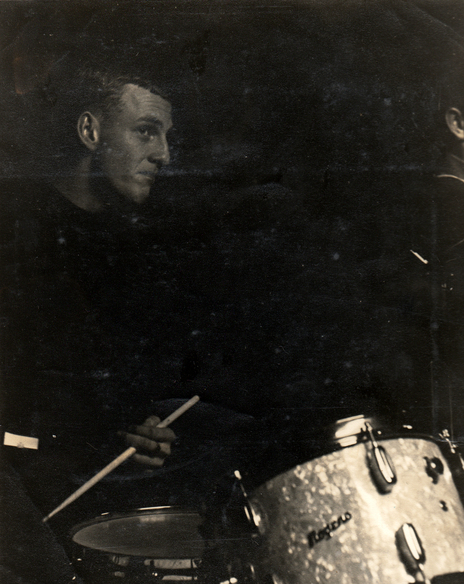
Frank Gibson Jr. in 1967
Photo credit:
Frank Gibson Jr. collection
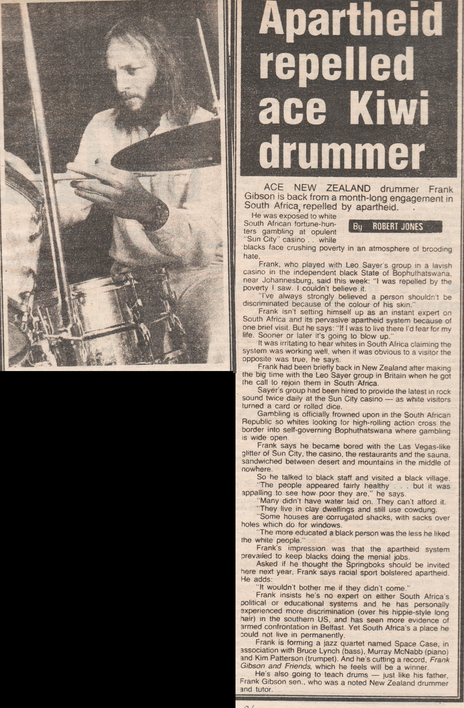
After being assured that the crowd was mixed Frank Gibson Jr. accepted a gig at South Africa's Sun City with Leo Sayer. The crowd was not mixed.
Photo credit:
Frank Gibson Jr. collection
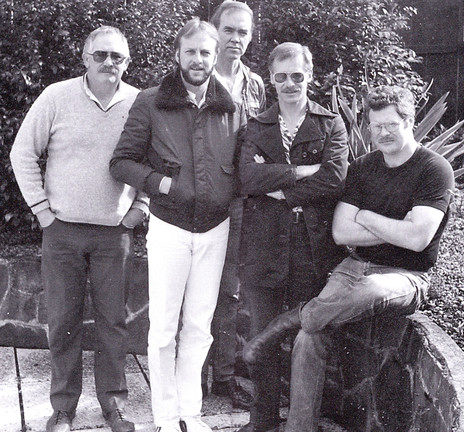
Space Case, from left: Andy Brown, Frank Gibson Jr, Brian Smith, Kim Paterson, Murray McNabb.
Photo credit:
Kim Paterson collection
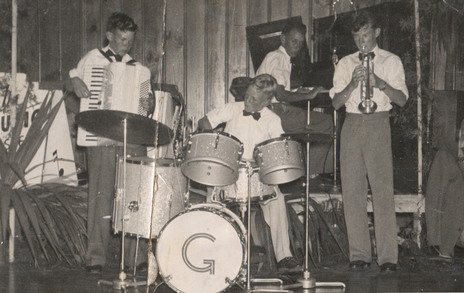
A 10-year-old Frank Gibson Jr. with his band, The Juvenolians. From left: Rodger Curtice (piano accordion), Frank Gibson Jr, Bob Williams (piano), Denis Duval (trumpet).
Photo credit:
Frank Gibson Jr. collection
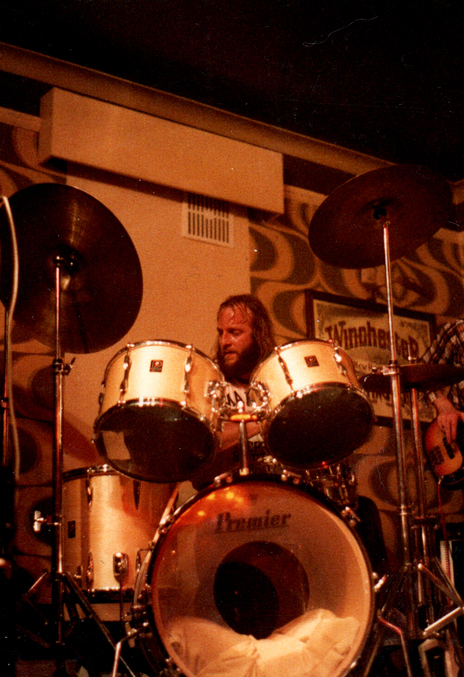
In London in the late 1970s
Photo credit:
Frank Gibson Jr. collection
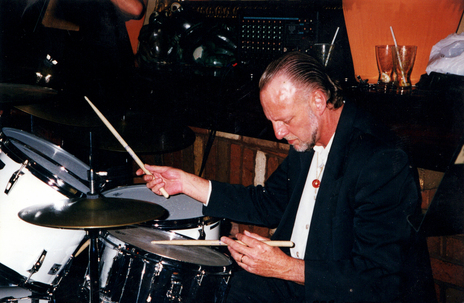
Frank at Auckland's London Bar, 1999
Photo credit:
Frank Gibson Jr. collection
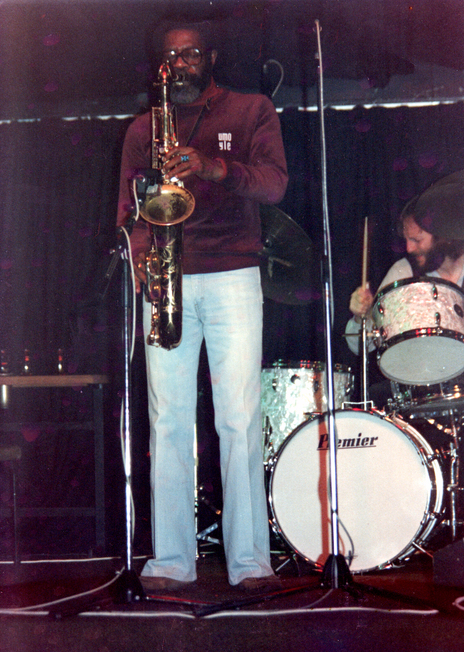
US saxophonist Joe Henderson with Frank at Auckland's Gluepot in the 1980s
Photo credit:
Frank Gibson Jr. collection
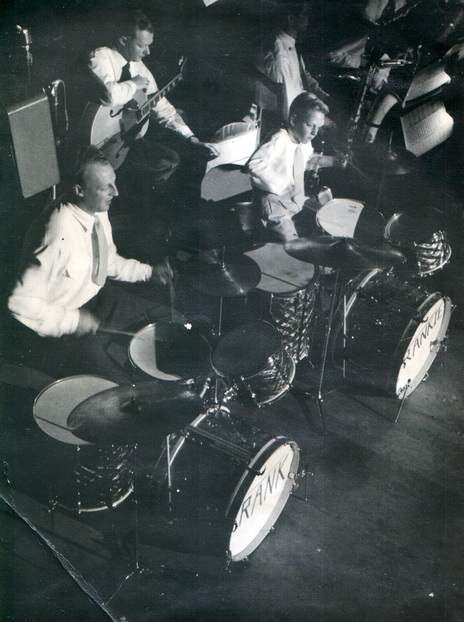
Frank Gibson Sr. and Frank Jr., Auckland Town Hall, 1954
Photo credit:
Frank Gibson Jr. Collection
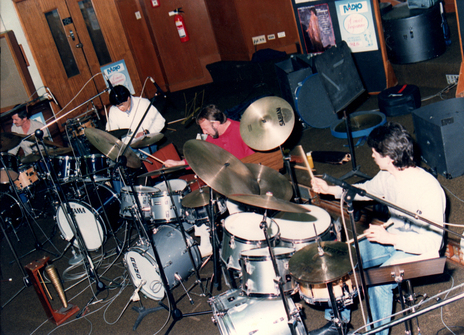
A five drummer session recorded at the ZB studio in Durham Lane, Auckland in the mid-80s
Photo credit:
Frank Gibson Jr. collection
Murray McNabb, Frank Gibson Jr, Neil Watson - The Wine Cellar, Auckland
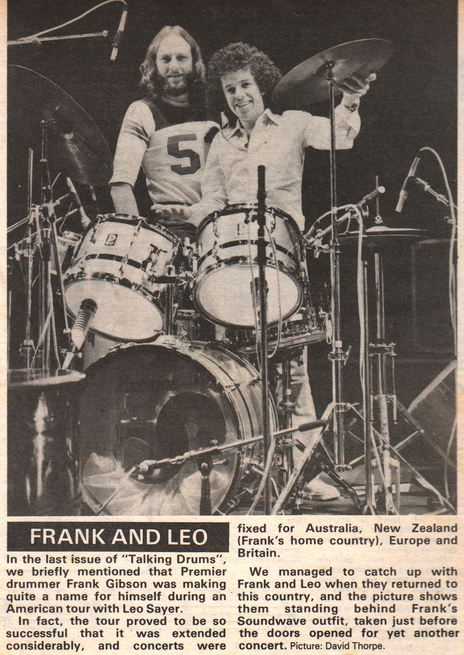
Frank Gibson Jr. with Leo Sayer
Photo credit:
Frank Gibson Jr. collection
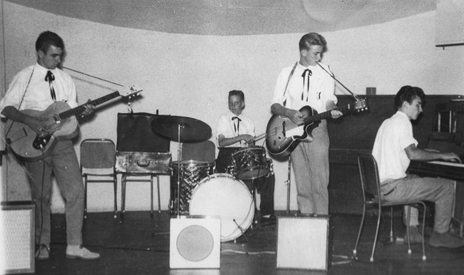
Frank Gibson Jr., aged 8, with his primary school rock and roll band
Photo credit:
Frank Gibson Jr. collection
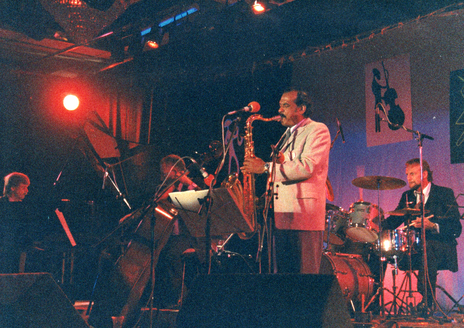
US saxophonist Ernie Watts, Alan Broadbent (piano), Andy Brown (bass) and Frank Gibson Jr. at Auckland's Gluepot in the 1980s
Photo credit:
Frank Gibson Jr. collection
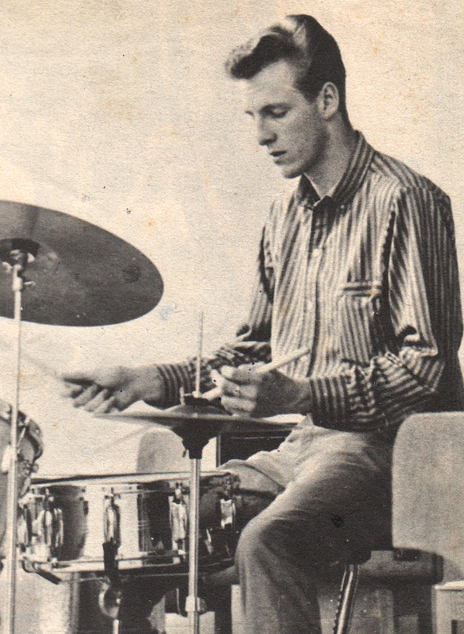
Frank Gibson Jr. aged 20 at the 1966 Tauranga Jazz Festival
Photo credit:
Frank Gibson Jr. collection
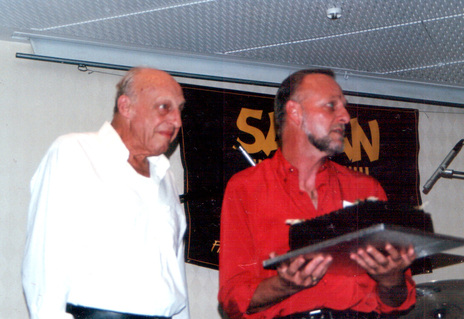
Frank Gibson Sr. with Frank Jr., 1998
Photo credit:
Frank Gibson Jr. Collection
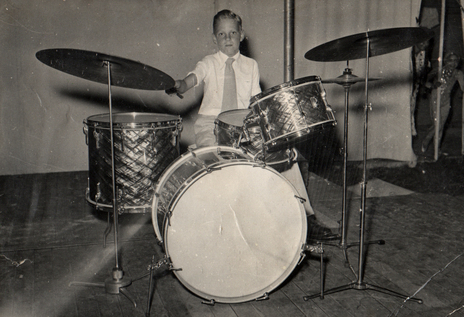
Frank aged 10, already the seasoned drummer
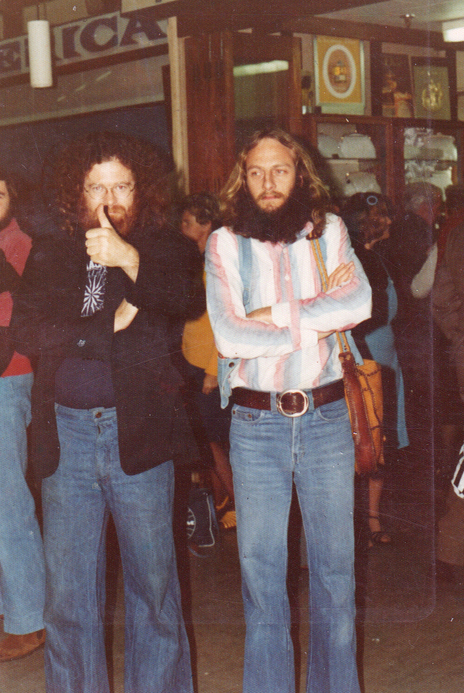
Murray McNabb and Frank Gibson Jr. head overseas in 1974
Photo credit:
Frank Gibson Jr. collection
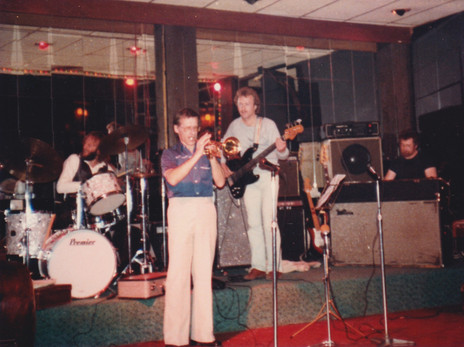
Kim Paterson onstage at Your Father's Mustache, Auckland, with Space Case: Frank Gibson Jr (drums), Bruce Lynch (bass), Murray McNabb (keyboards).
Photo credit:
Kim Paterson collection
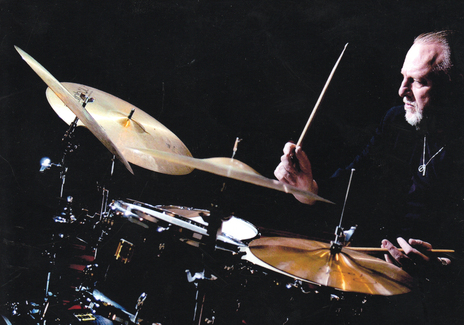
Frank Gibson Jr. in 2007 performing a drum solo at Marama Hall, The University of Otago
Photo credit:
Frank Gibson Jr. collection
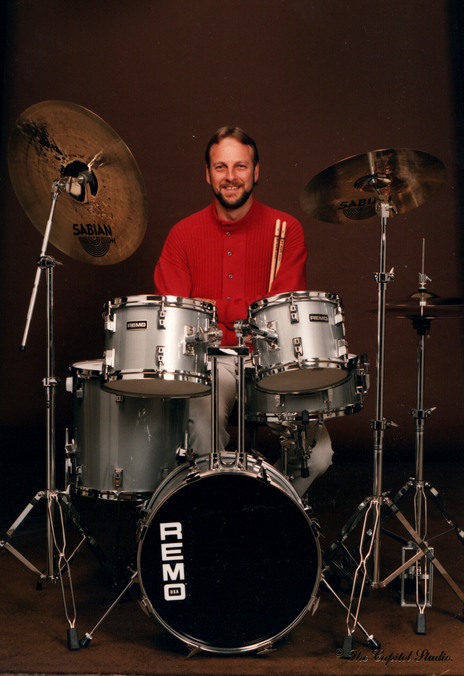
Frank Gibson Jr.
Photo credit:
Frank Gibson Jr. collection
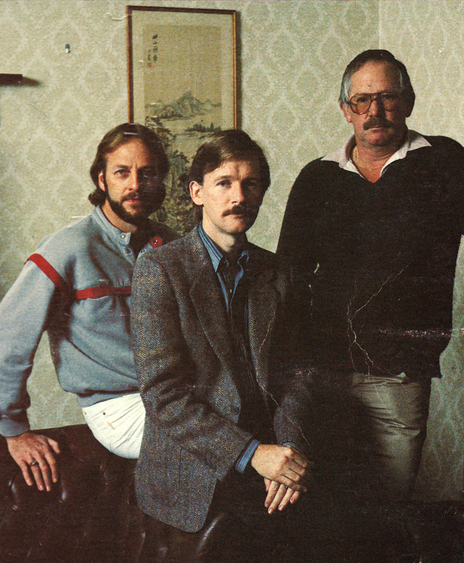
The Alan Broadbent Trio, 1985: Frank Gibson Jr., Alan Broadbent and Andy Brown. This trio recorded the Song Of Home album.
Photo credit:
Frank Gibson Jr. collection
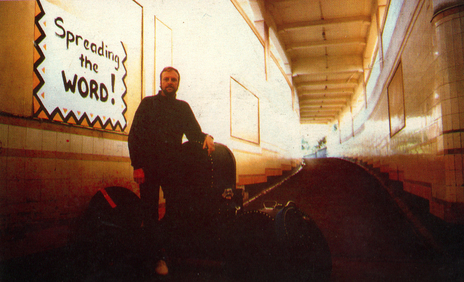
An image taken for the cover of Frank Gibson's Jazzmobile, a group that made one album for Kiwi in 1987. The lineup was Frank plus Phil Broadhurst (piano), Brian Smith (saxophone), David Woodbridge (trombone), David Colven (saxophone), Andy Brown (bass) and Kim Paterson (flugelhorn and trumpet).
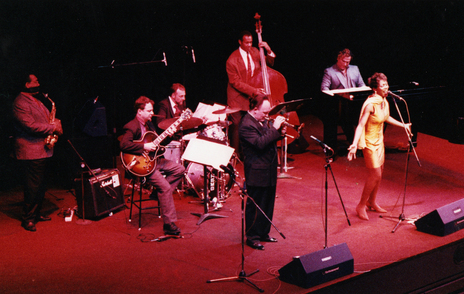
In Perth backing Carmen Lunde
Photo credit:
Frank Gibson Jr. collection
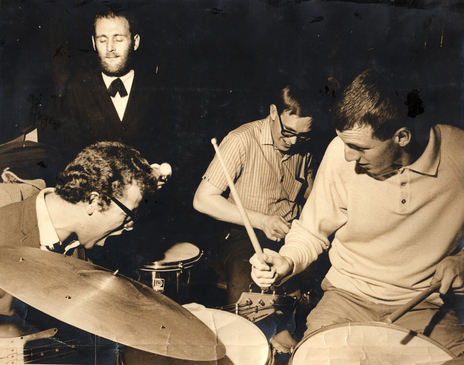
The Embers with Frank Gibson Jr. (right) in the mid-1960s. With Frank is bassist Yuk Harrison and jamming guest drummers Roger Sellers and Alan Nash.
Photo credit:
Frank Gibson Jr. collection
Frank Gibson Jr's New Bop Quintet, K Road, Auckland, 30 Sept 2020
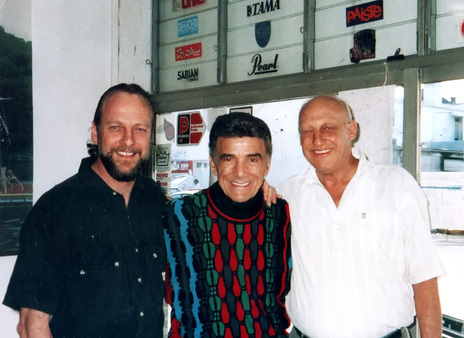
Frank Gibson Jr, American Jazz drummer Louie Bellson, Frank Gibson Sr. at the Balmoral Drum City store
Photo credit:
Frank Gibson Jr. Collection
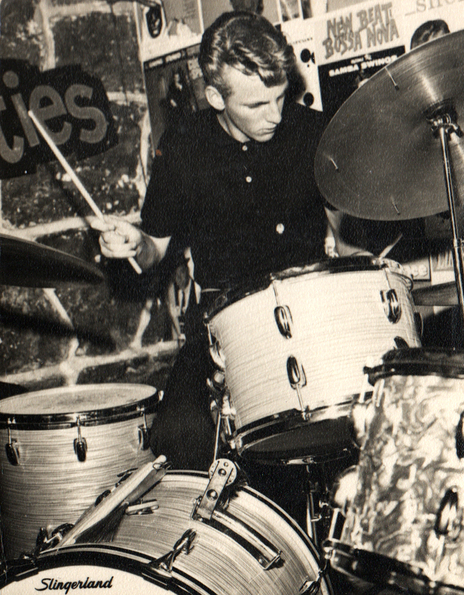
Frank Gibson Jr. aged 17
Photo credit:
Frank Gibson Jr. collection
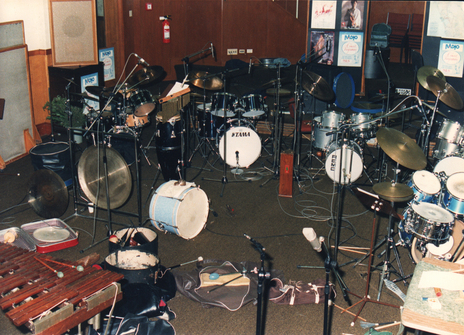
The setup for the 5 drummer session at ZB Studios, Durham Lane, Auckland
Photo credit:
Frank Gibson Jr. collection
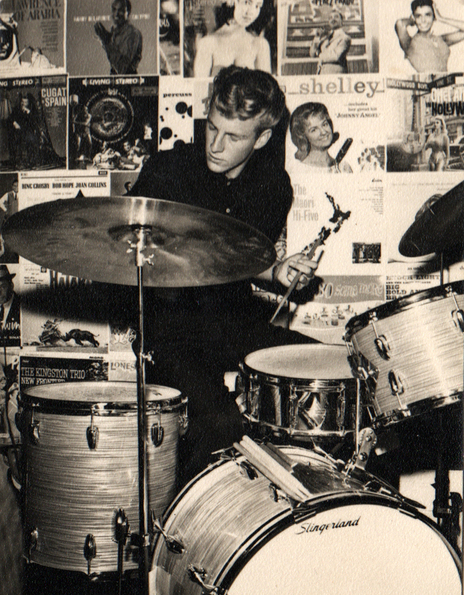
Frank aged 17
Photo credit:
Frank Gibson Jr. collection
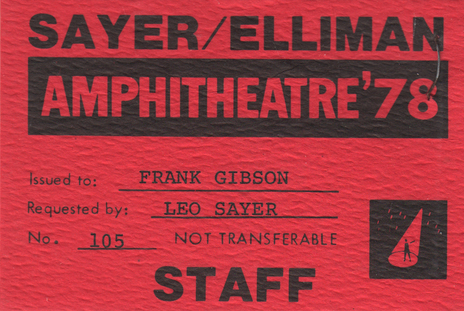
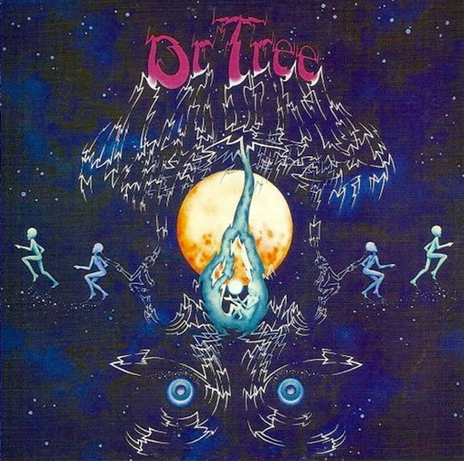
The 1975 Dr. Tree album. Dr. Tree were one of the first live acts to hold down a residency at Auckland's Globe Tavern, where they pulled regularly large crowds on Mondays for many months.
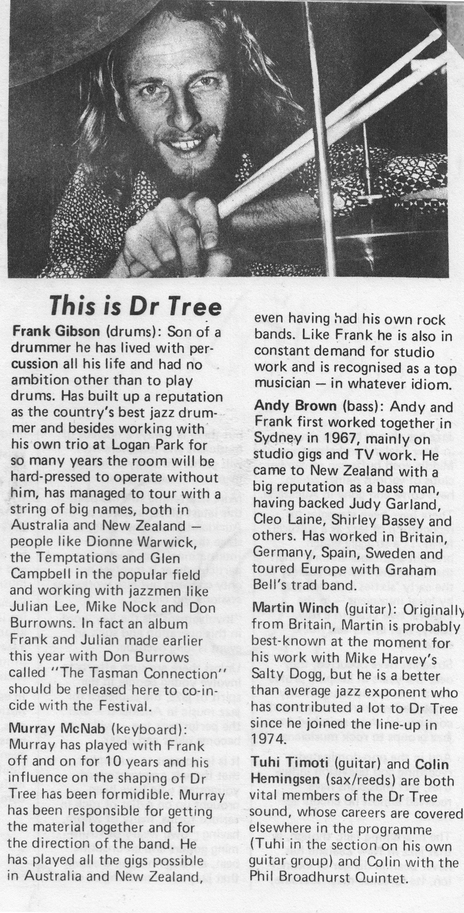
"This is Dr. Tree" - a profile of the famed mid-70s band. They recorded just one album for EMI in 1975. Only 500 copies were pressed, thus ensuring a collector's price in the 21st Century of hundreds of dollars.
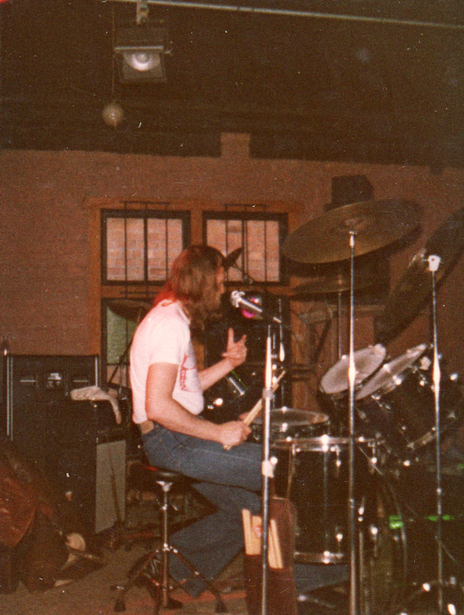
Frank at a 1972 drum workshop
Photo credit:
Frank Gibson Jr. collection
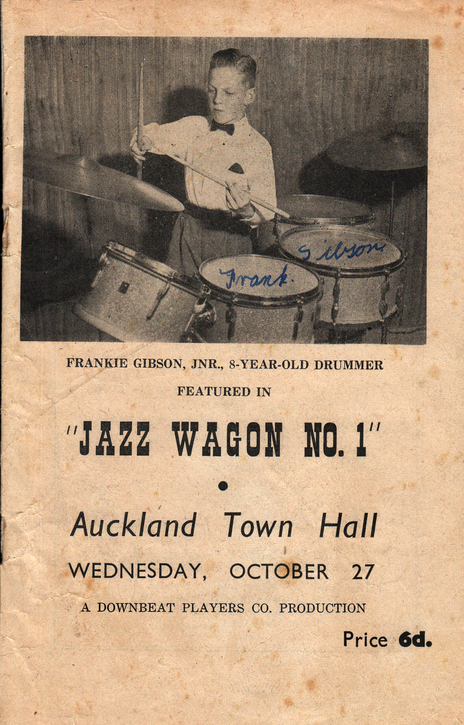
The eight year old Frank Gibson Jr. at Auckland Town Hall, October 1954.
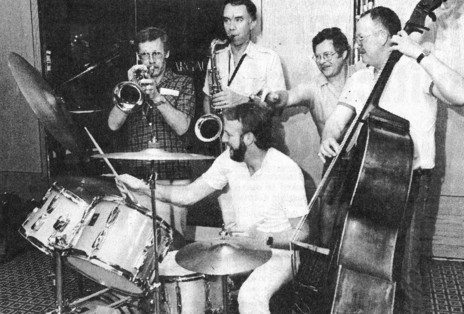
New Zealand jazz funk fusion band Space Case, active in the early 1980s. Clockwise from top left: Kim Paterson, Brian Smith, Murray McNabb, Andy Brown, Frank Gibson Jr.
Photo credit:
Kim Paterson collection
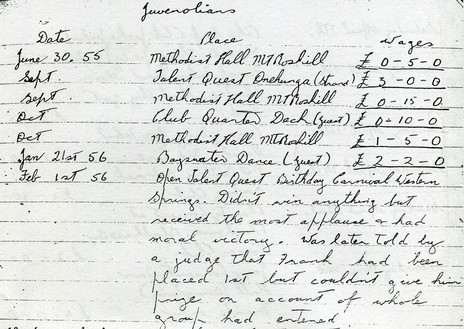
The Juvenolians' show diary as kept by band manager Frank Gibson Sr, 1955-56. "Didn't win anything but received the most applause and had moral victory. Was later told by a judge that Frank [Jr] had been placed 1st but couldn't give him prize on account of whole group had entered."
Photo credit:
Dennis Huggard collection
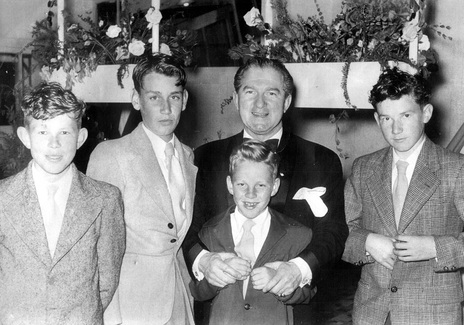
The Juvenolians with UK bandleader Ted Heath. From left: Rodger Curtice (piano accordion), Bob Williams (piano), Ted Heath, Denis Duval (trumpet). Frank Gibson Jr. is in front of Heath, who said to Frank Gibson Sr that if he brought the band to the UK, a gig at the London Palladium would be organised.
Photo credit:
Frank Gibson Jr. collection
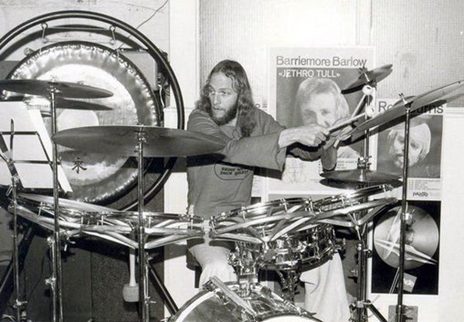
Frank Gibson Jr. with Dr. Tree in the mid-1970s

